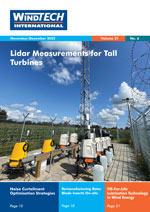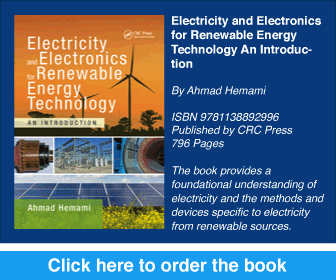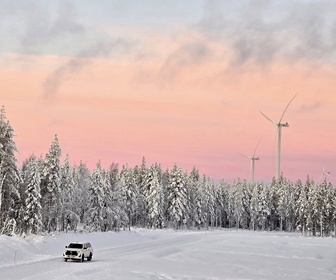- Category: Articles
The PowerModule PM3000W
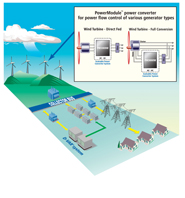 The rising demand and increasing penetration of wind-generated electricity has created a critical need for power conversion systems designed to meet the unique requirements of the wind power market. This article describes the benefits of American Superconductor's PowerModule PM3000W, a fully programmable, flexible and modular power converter developed specifically for wind power applications.
The rising demand and increasing penetration of wind-generated electricity has created a critical need for power conversion systems designed to meet the unique requirements of the wind power market. This article describes the benefits of American Superconductor's PowerModule PM3000W, a fully programmable, flexible and modular power converter developed specifically for wind power applications.- Category: Articles
The Wind Power of Tomorrow on Your Screen Today
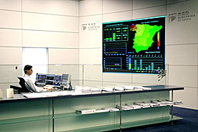 Either for trading or for power system operation, wind power forecasts have become necessary input to the daily management of wind generation. While fast transfer of research results to operational and commercially available products has been witnessed over the last few years, there are still challenges to face in order for wind power forecasts to fully satisfy the needs of their various users.
Either for trading or for power system operation, wind power forecasts have become necessary input to the daily management of wind generation. While fast transfer of research results to operational and commercially available products has been witnessed over the last few years, there are still challenges to face in order for wind power forecasts to fully satisfy the needs of their various users.By Pierre Pinson, , Gregor Giebel and Henrik Madsen, Technical University of Denmark, Denmark .
- Category: Articles
ZephIR Minimises Risk for NaiKun's Offshore Wind Farm Development
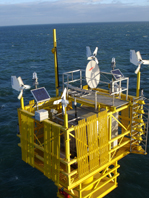 ZephIR has now been used as the sole on-site resource assessment tool for the Hecate Strait wind farm project for 12 months. This article reflects on the pioneering approach taken by NaiKun Wind Development Inc and the results delivered by ZephIR to date.
ZephIR has now been used as the sole on-site resource assessment tool for the Hecate Strait wind farm project for 12 months. This article reflects on the pioneering approach taken by NaiKun Wind Development Inc and the results delivered by ZephIR to date.- Category: Articles
Endurance Calculations for Bearings
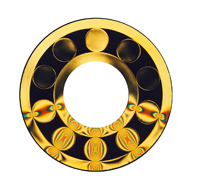 Practical experience has shown that seemingly identical rolling bearings operating under identical conditions will not necessarily exhibit the same endurance life. Standardised life calculation methods can help us make educated choices about a bearing size's suitability for a particular application.
Practical experience has shown that seemingly identical rolling bearings operating under identical conditions will not necessarily exhibit the same endurance life. Standardised life calculation methods can help us make educated choices about a bearing size's suitability for a particular application.- Category: Articles
Regional Market Integration as an Opportunity for Wind Energy
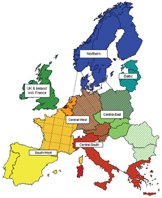 The development of the European internal electricity market is essential for an efficient integration of wind energy into the power system. The deregulation process was firstly characterised mainly by the opening of national markets. Lately, the emergence of supranational, regional power markets adds a truly European dimension by enabling flexible power trade over borders. Requirements for a market design that leads to an economically efficient integration of wind power on a continental scale are currently being investigated within the European TradeWind project. International markets allow the aggregation of widely distributed wind farms into flexible portfolios of supply and demand. Consequently, a good design of international power markets is essential for an efficient integration of wind energy into the power system.
The development of the European internal electricity market is essential for an efficient integration of wind energy into the power system. The deregulation process was firstly characterised mainly by the opening of national markets. Lately, the emergence of supranational, regional power markets adds a truly European dimension by enabling flexible power trade over borders. Requirements for a market design that leads to an economically efficient integration of wind power on a continental scale are currently being investigated within the European TradeWind project. International markets allow the aggregation of widely distributed wind farms into flexible portfolios of supply and demand. Consequently, a good design of international power markets is essential for an efficient integration of wind energy into the power system.- Category: Articles
An EC FP7 Programme Mapping the North, Irish And Baltic Seas
 NORSEWInD is an exciting new four-year programme that started on 1 August 2008. The general scope of the project is to create a wind speed database and associated wind atlas suitable for offshore wind farm development for the North, Irish and Baltic Seas.
NORSEWInD is an exciting new four-year programme that started on 1 August 2008. The general scope of the project is to create a wind speed database and associated wind atlas suitable for offshore wind farm development for the North, Irish and Baltic Seas.- Category: Articles
An Analysis of Data from the Triton Sonic Wind Profiler
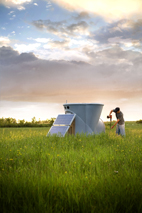 The met mast is dead. Long live sodar! While it is early to make this statement emphatically, data from field tests indicates that a new generation of sodar technology is poised to replace meteorological masts for many assessment applications. This article reports on data from customers using Second Wind's Triton® sonic wind profiler in eight diverse locations. The findings show reliable reporting of valid wind data at heights that encompass the full blade sweep of commercial wind turbines. Gross data recovery was above 95%, correlation to anemometry at 60 metres was 0.97, and signal-to-noise ratios were greater than 9 at heights up to 160 metres.
The met mast is dead. Long live sodar! While it is early to make this statement emphatically, data from field tests indicates that a new generation of sodar technology is poised to replace meteorological masts for many assessment applications. This article reports on data from customers using Second Wind's Triton® sonic wind profiler in eight diverse locations. The findings show reliable reporting of valid wind data at heights that encompass the full blade sweep of commercial wind turbines. Gross data recovery was above 95%, correlation to anemometry at 60 metres was 0.97, and signal-to-noise ratios were greater than 9 at heights up to 160 metres.Use of cookies
Windtech International wants to make your visit to our website as pleasant as possible. That is why we place cookies on your computer that remember your preferences. With anonymous information about your site use you also help us to improve the website. Of course we will ask for your permission first. Click Accept to use all functions of the Windtech International website.



